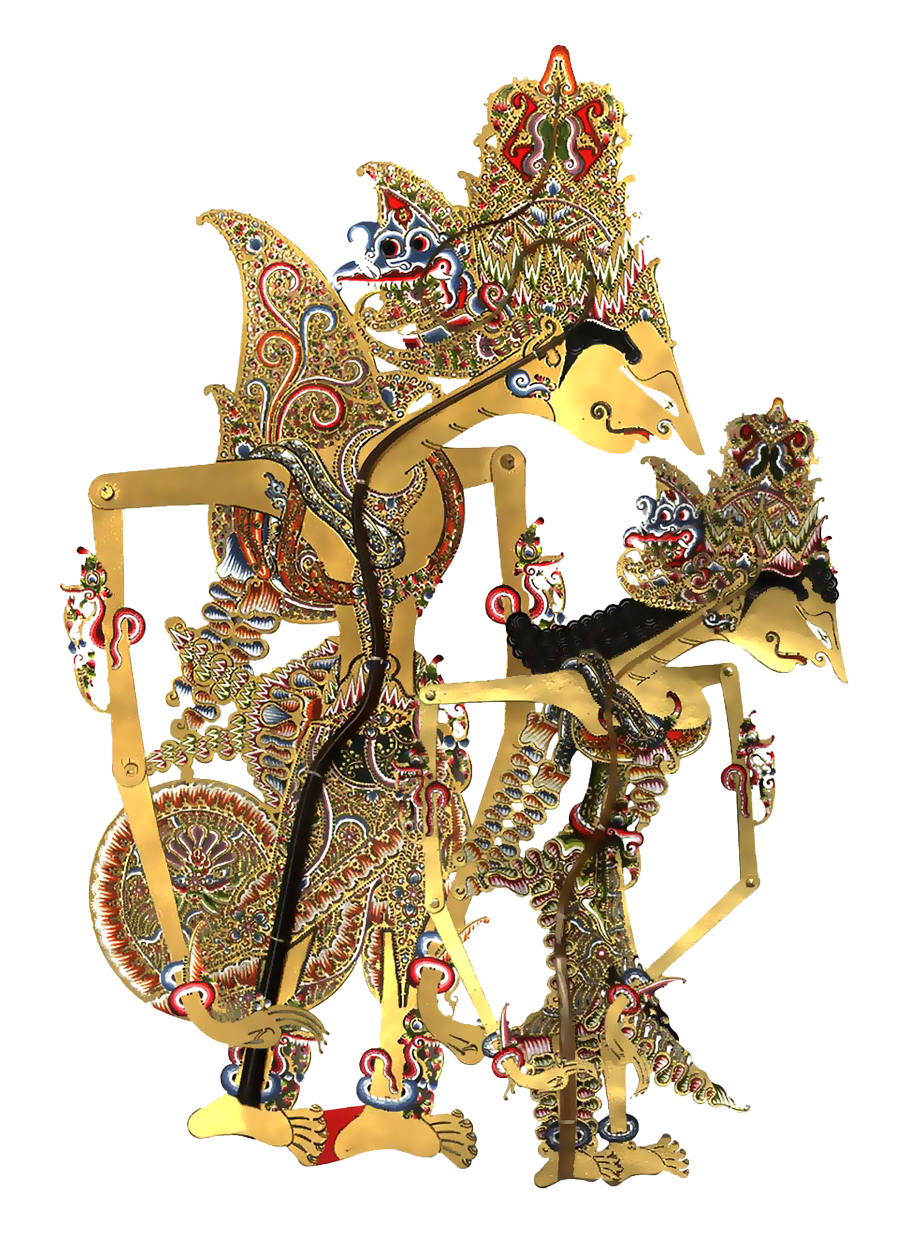''Semar Ngejawantah!!'', the sound of Dalang was spoke loudly at the wayang performance. Semar is the one part of Punakawan (the clown servant figures in wayang kulit).
Wayang performance has been entrenched in the Javanese culture since the age of ancient Mataram in middle Java in 9th - 10th centuries. In Indonesian, wayang performance was known the term ringgit. Nobody knows the wayang originated come from. There are theories that wayang originated from India, China, or Java. But, the Indonesian listen carefully that wayang originated from Java. It is used terms of Java as the implement of wayang performance, such as Kelir (screen), Blencong (lamp), Kecrek, and etc.
There are various of wayang, such as wayang gedhog is wayang which show stories from Panji Romances; wayang wong is wayang where the actors and actress are human being; wayang kulit is the variety of wayang which has made from leather.
Wayang kulit is most popular than the other wayang variety in Java, Jogjakarta particulary. The buffaloes leather is the best material to make the wayang kulit, and the price of the materials has almost millions rupiah, make the price of wayang kulit is expensive. The price is started from the hundreds to the millions. Beside, the wayang making process wanted for much times, then drawing to coloring. The wayang kulit makers can be found at Tamansari, Kasongan, Imogiri, Kotagede, etc.
Wayang kulit performance wanted for some implements, such as kerawitan group (sinden, a singers in kerawitan, and pengrawit, gamelan player in kerawitan); dalang; puppets; audiences; and etc. The implements of wayang performance have the symbol of life. Man have to balanced to the nature and created the peacefulness. For example, in gendhing gamelan, the players have to created blended harmoniously with another variety of instrument. It could not be dominated.
Wayang performance is the medium to invite the spirit of the anchestors. Wayang performance could not separated with some ritual ceremonie, like khitanan, merti desa, and etc. Wayang kulit purwa was presented to celebrate the Sultan's birthday every 35 days by combining the seven day week and pasaran, the five day week according to Javanese calendar.
Performance of wayang kulit purwa presenting stories from the epics, such as Mahabharata, Ramayana, Arjuna Sasrabahu, etc. Sometimes the myth always related to specific royal event, but the stories have been recreated and adapted to match the Javanese tradition.
Interested? You may go to The Sono Budoyo Museum to watchs the really of wayang performance every night at 8pm to 10pm or at Sasono Hinggil Palace at 10pm until 4am.
Source: tourjogja.com
photo: finandastudio.deviantart.com
photo: tokohwayangpurwa.blogspot.com






 Reply With Quote
Reply With Quote

Bookmarks